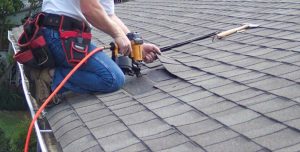
Regrettably, at this time within the good reputation for building construction we haven’t yet create a roofing system which will last forever. Therefore, everyone will probably suffer from a roof covering substitute.
The rooftop, in the end, is actually most significant structural element of any building. With no quality, weather-tight roof, other aspects of a structure is going to be destroyed quickly. Paint, drywall, framing, and flooring choices are not engineered to resist Nature. Interior spaces, and individuals, need defense against he elements.
Listed below are some roofing terms which may be useful throughout the making decisions process:
Square – One of measure generally utilized in roofing and siding that equals 10 ft by 10 ft or 100 square ft (1 square equals 100 square ft). Most roofing materials are offered per square, and roofers generally calculate costs and cost in line with the final amount of squares.
Decking or Sheeting – The flat layer of fabric connected to the roof joists. Many older homes and structures have wood plank decking. Most contemporary residential structures have plywood or orient strand board (OSB) decking that’s produced in 4 feet x 8 feet sheets (sometimes known as sheeting). The most typical thickness of roof decking used today is 7/16″. Underlayment and shingles are affixed to the rooftop decking.
Asphalt shingles – Organic based shingles which were stopped in the year 2006 because of poor performance and lots of class-action lawsuits. The word asphalt shingle is frequently still used today like a misstatement. Many roofers make reference to publish 2006 shingles as asphalt shingles in which the correct technical term is really composition shingle.
Composition Shingle – Modern shingles manufactured by having an asphalt/fiberglass mixture. The asphalt/fiberglass body from the shingle is included having a protective granular put on-layer.
Granular Put on-Layer – The ceramic top coating of the composition shingle provides rigidity (defense against hail, debris, and punctures), Ultra violet protection, as well as offers the color.
Architectural / Laminated / Dimensional Shingle – All terms make reference to the current popular shingle manufactured with several layers of asphalt/fiberglass material (laminated) that offer added strength, durability, along with a shake-like appearance.
Underlayment – The layer of fabric put on the rooftop decking just before installing shingles. The most typical underlayment is felt (tar) paper in 15 or 30 pound options. There are lots of new synthetic products available which are created with waterproof/breathable material (much like house wrap). Synthetic underlayment continues to be tested to possess advantages in durability and gratifaction versus traditional roofing felt.
Ice and Water or Weather Barrier – Underlayment manufactured with adhesive somewhere and it is accustomed to safeguard roof eaves and valleys from ice dams and water back-ups. Installing ice and water barrier is really a critical part of stopping harm to roof decking by water and/or ice copying in the gutters on and on beneath the shingles. Most municipal building code requires no less than the very first three ft of roof eaves to become included in ice and water barrier.
Roof Exhaust Vent – The output space left open around the greatest part of roof to maintain proper ventilation and discharge of heat. Roof vents could possibly be the older style box type, power vents, or perhaps a modern ridge vent system. The dwelling and elegance of the roof determines which type of vent works best.
Roof Intake Vent – The inflow space left open around the cheapest part of roof to maintain proper ventilation and infusion of awesome, exterior air. Intake vents could be gable vents or soffit vents. The dwelling and elegance of the roof determines which type of vent works best.
It’s important research your options just before discussing any project having a roofer or roofing contractor. You will find huge amounts of selections for shingles, underlayment, vents, and decking, along with a huge variation on price for every kind of material. Each element of a roof covering is crucial, as each bit should interact like a system once installed correctly. Failing of 1 component could cause failing from the whole system.



